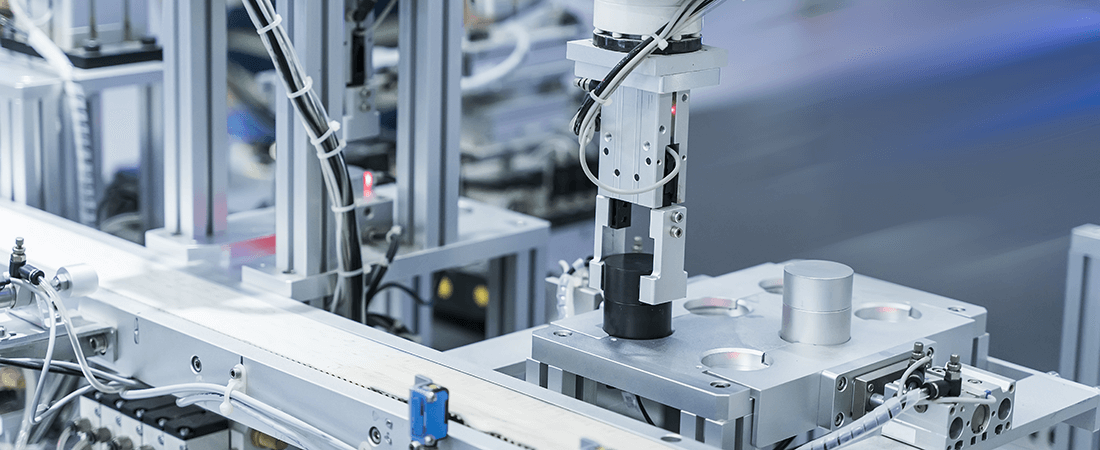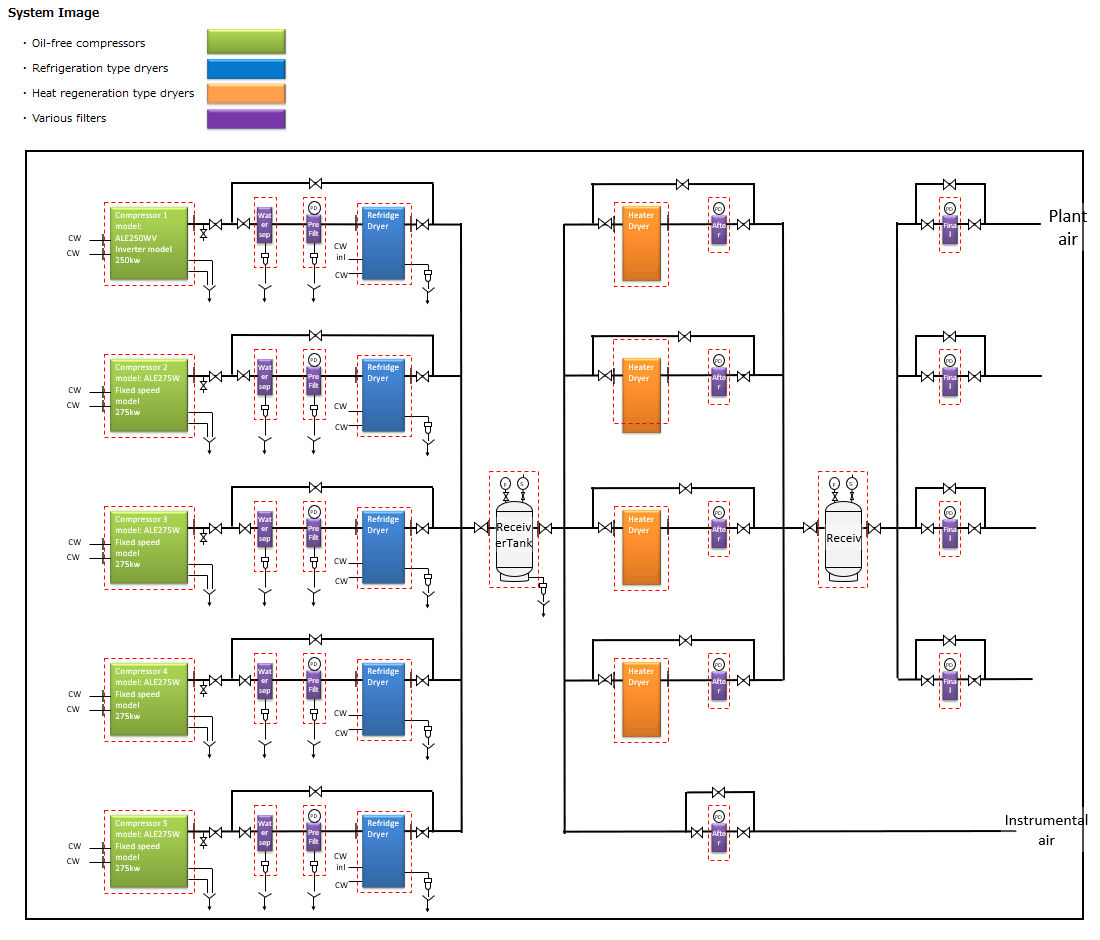
A clean air system was built to satisfy low dew point requirement, even during hot summer season!
In addition to maximizing energy savings, the difficult issue of sustaining low dew point during hot summer season in India was achieved, not merely by optimizing individual equipment, but by proposing an optimization of the total system as whole. The implementation achieved a system solution that responds to the unique needs of the customer.
- Low dew point/clean air system even during hot summer or monsoon season (rainy season) in India
- Energy saving with compressor equipment
A total system, utilizing refrigeration type dryers and externally heated desiccant dryers was proposed.
- -70°C PDP was secured, with stable supply of clean air
- Initial investment cost was reduced by about 10% and running cost was reduced by about 15%
ALE250WV x 1 unit, ALE275W x 4 units, refrigeration type dryer x 5 units and externally heated desiccant dryer x 4 units, drain separators/pre-, after- and final- filters, group controller.
1. Implementation of refrigeration type and externally heated desiccant dryers
The dew point required by facilities is extremely low dew point (-70C PDP), however, faced with following kinds of issues:
- Low dew point must be sustained even during hot summer or monsoon season (rainy season) in India
- Desire to consider maximization of energy saving
- Desire to minimize compressor sizes as much as possible, with consideration for power supply equipment capacity
We considered how we can build an optimized system.
First of all, dryers that can achieve -70C PDP are generally either desiccant type dryers (heatless dryers or heat regeneration type dryers), however, since these basically need to be selected to match peak conditions, considering any design for achieving the desired dew point with a heatless type dryer alone in an environment with ambient temperature of 50°C results in an extremely large purge loss (about 17 to 20%), which is too large when considered from the perspective of energy saving, and this also meant that due to such purge loss of the dryer the size of the compressor must be a size larger, which then exceeds the power supply equipment capacity.
Having figured this out, we decided to perform pre-dehumidification by installing a refrigerating type dryer to precede the desiccant type dryer, then installing a externally heated desiccant dryers as the desiccant type dryer as this would decrease purge loss/energy loss better than a heatless dryer, to deal with respective issues described above and achieved:
- Low dew point (-70°C PDP) is sustained even during hot summer or rainy season
- About 15% energy saving achieved in comparison with a case involving a single heatless dryer
- About 10% compressed air facility initial investment cost saving achieved in comparison with a case involving a single heatless dryer and also a reduction in capacity of power supply equipment




